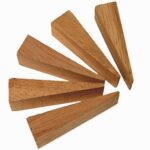An inclined plane is a flat, slanted surface (i.e., higher on one end) that is useful for moving objects to another height. Examples include ramps, hillsides, and slides. Inclined plane questions assess your knowledge of how the degree of the incline (i.e., the steepness of the angle), the size and weight of the object, and gravity effect the movement of objects. Below are some key facts that may be useful for answering questions about inclined planes.
Key Facts
· The load and force move in the same direction along the plane. In other words, when you apply upward force to push a load up a plane, the load also moves upward. When you apply downward force to push a load down a plane, the load also moves downward.
· Objects moved along an inclined plane will travel across a longer distance, and over a longer period of time, than if lifted straight up or dropped straight down. • When moving an object up an incline, gravity is pulling the object down. Thus, the effort or force that you must exert to move the object up the incline is greater than the effort needed to move an object down an incline.
· Resistance or friction is created where the surface of an object meets the surface of an inclined plane. This resistance makes the work of moving the object more difficult and/or slower, whether moving the object up or down the plane.
· The steeper the inclined plane (i.e., the more it approaches 90 degrees), the more easily an object moves down it. The opposite is also true: the steeper the plane, the more difficult it is to move an object up it.





